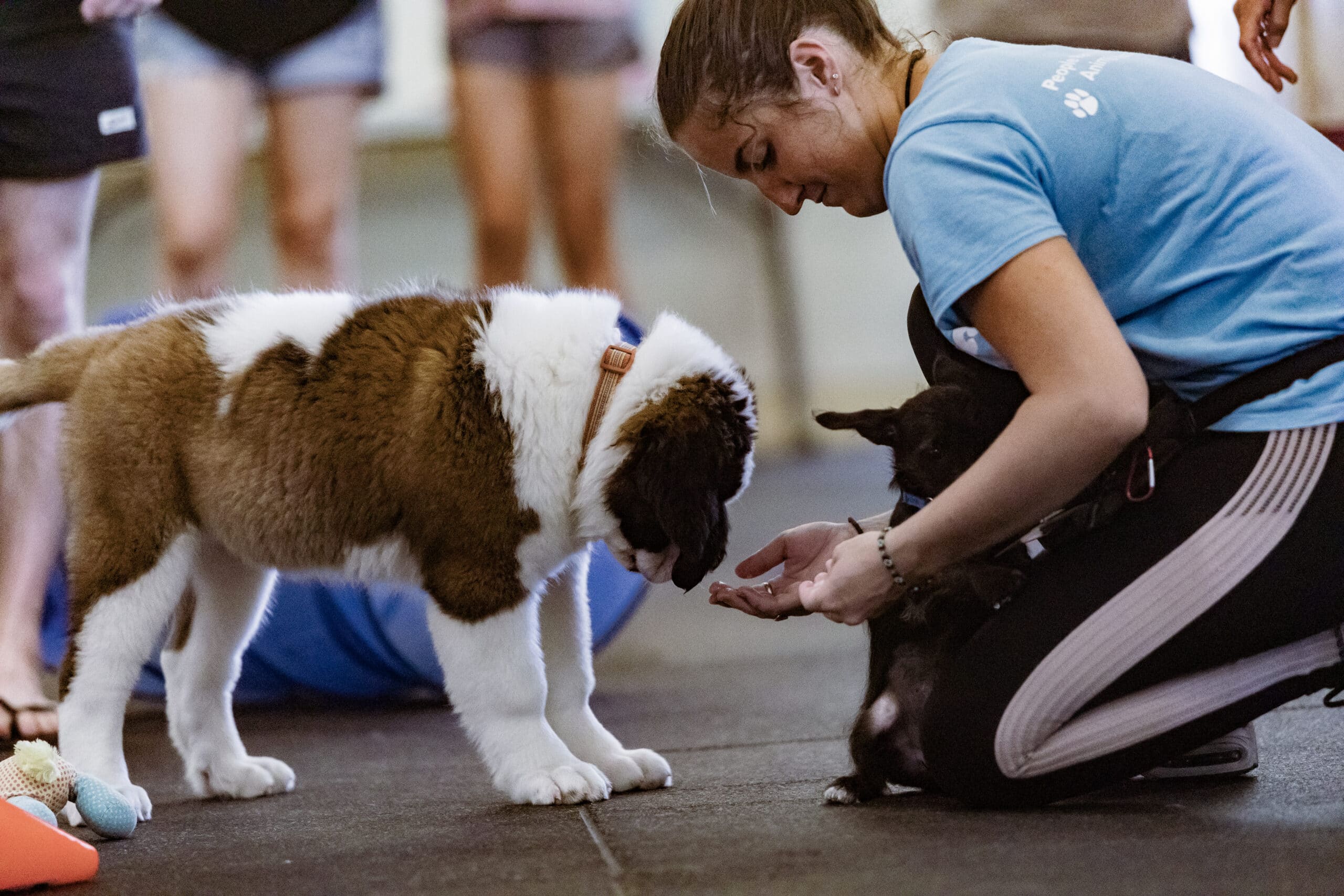What is Play Agression?

Cats are predators, and hunting is a natural behavior for them. Cats will practice behaviors that are part of hunting, such as stalking, pouncing, and biting, throughout their development- from about 5 weeks up through adolescence and even as adults. Kittens (and cats) are instinctively drawn to things that move. Sometimes, for lack of a better outlet or because they have been encouraged to do so, cats target humans as play objects. Biting, grabbing, and swatting in a playful or predatory manner is termed “play aggression”. Though the word “play” makes it sound fun, this has the potential to be a serious form of aggression and should be worked with. Solo kittens are especially at risk of developing this type of behavior. It is thought that kittens learn appropriate bite inhibition from playing with other kittens. If deprived of this opportunity at a young age, this may lead to less inhibited, harder biting and grabbing.
What Type of Home is Best?
Kittens who have shown this type of behavior towards humans would do best being with another active kitten, of similar age. An energetic adult cat may be a good fit as well. This type of behavior is not particularly well-tolerated by the majority of older, mellow cats, who can find it stressful to be continually pounced on! Play-aggressive kittens are not recommended for households with young children, because of the risk of the children being nipped, and also because the kittens need very consistent handling. They tend to do best with adopters who have time to play with them with interactive toys several times a day, and provide them with the mental and physical stimulation they need- boredom will exacerbate the biting!
How Do You Work With This Behavior?
Redirect to Toys
Any kitten should get playtime with toys — but it is essential that play aggressive kittens get a lot of it! Playing them out will tire the kitten out and make it less likely that they will pounce on humans. Also, the more that the play energy is directed towards toys, the more it will be a habit that toys are to play with.
See our handout on “How to Play with your Cat” for more tips.
Never Use Hands as Toys
In conjunction with providing playtime with toys, it is equally important to never allow or encourage your cat to nip or grab you. This includes avoiding playing with your kitten by moving your hands or feet under covers and encouraging them to pounce on you, or playing chase or hide-and-seek games with your cat. This type of play encourages your kitten to see you as a play object.
Limit Handling to Times When Cat/Kitten is Calm
It is best not to handle these kittens/cats unless they are calm, and for brief periods of time. Treats can be used to acclimate the kitten to petting; feeding time or when they first wake up for a nap can be good times for more petting. When your kitten grows active or uncomfortable with petting, it’s time to stop and switch to toys. It’s important not to force handling on a kitten or cat, but rather to find times when your cat is most accepting of petting and take advantage of those times. For kittens, as they get older, they will likely have more hours of the day when they are pettable — at their most active stage, they may not have many of those hours!
Consider Adopting a Playmate
Someone with similar energy and play style would be great for your kitten. Many adult cats can do well with another companion cat, with proper introduction, as well.
Diversion, Not Correction
Physical correction such as nose-tapping and scruffing, are NOT recommended. This type of handling can escalate aggressive responses in cats, and is not an effective way to train. Instead, use a loud or high-pitched noise to interrupt the behavior, and then use toys to divert their attention elsewhere. It may be practical to keep toys such as ping-pong balls as well as long-handled interactive toys in each room, so that you can easily access them!
Time-Outs When You Are Not Able to be Consistent, or When You Need a Break
For times when you are busy, say working on your computer, or cooking, and don’t have the patience or time to redirect your cat to toys, it is perfectly OK to confine them to a safe and happy time-out room. Make sure the room has everything the kitty needs — litterbox, food, and water, and toys, and make the experience positive for your cat. You can, for instance, lure your cat into the timeout room with a fishing-pole type toy, play for a few minutes, then put down some treats (you can use a food puzzle for more fun for your cat) and leave.
Provide Other Types of Mental Stimulation and Environmental Enrichment
A bored kitten is a naughty kitten. Keep your cat busy by providing things like treats in a food puzzle (sold in pet stores or home-made) lots of cat trees, window perches — perhaps looking out to a bird feeder! Rotate toys so your kitten still finds them interesting. Solo play toys as well as interactive toys can be rotated to keep them new. If your cat or kitten is confident and outgoing, you may be able to train them to a harness and leash, and offer some walks. Otherwise, trick training such as to sit or high five can be fun for both of you.


